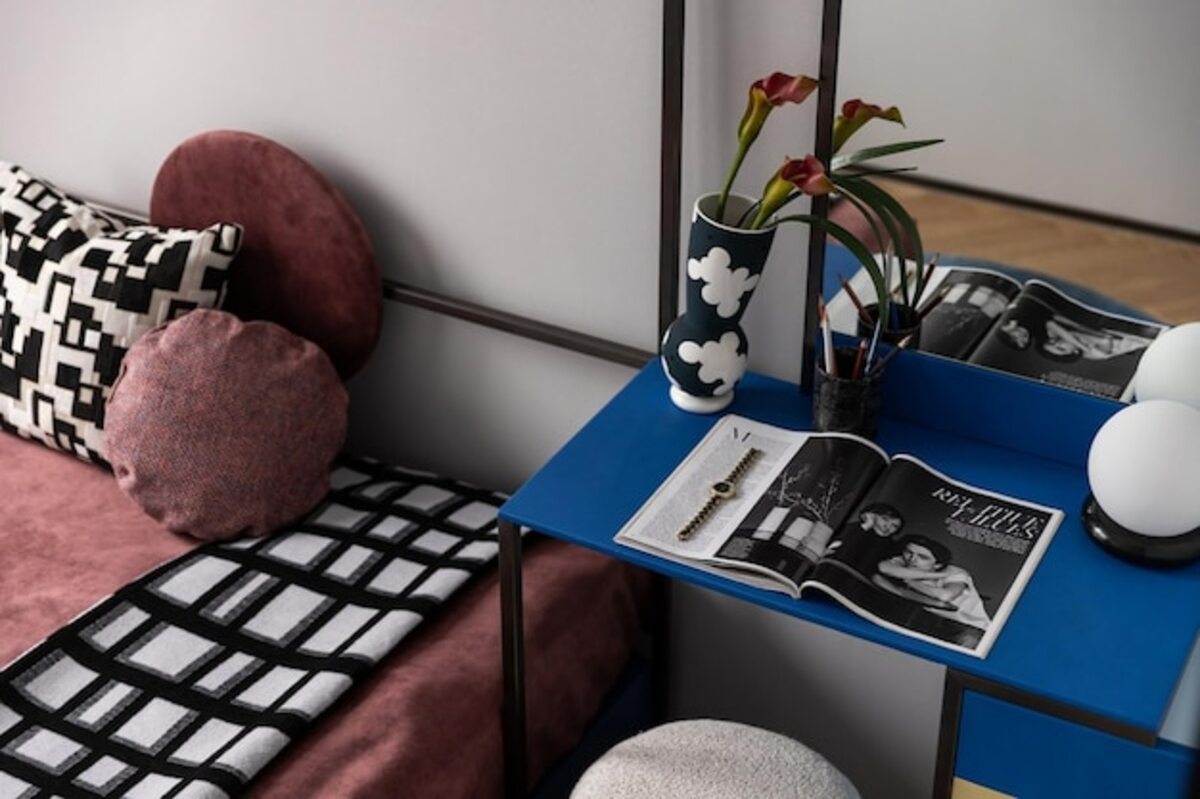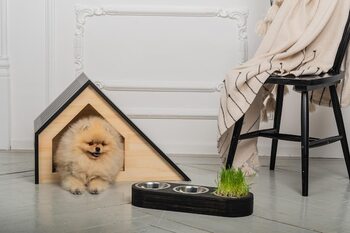Urban spaces: the art of personalizing your home with style

Urban spaces: the art of personalizing your home with style is an invitation to transform your environments into unique refuges that reflect your personality. Amid the city bustle, every corner of your home can tell a story and be a space of comfort and creativity. With distinctive touches and elements that highlight the local essence, you will discover how to make your home a true urban sanctuary, where style and functionality intertwine in perfect harmony. Dare to personalize and bring your spaces to life!
The importance of colors in urban home customization
The choice of colors in the decoration of an urban home is essential to create an environment that is not only aesthetically pleasing but also reflects the personality of its inhabitants. Colors have the power to influence our mood and how we perceive the space around us. For example, warm tones like oranges and yellows can bring a sense of warmth and energy, ideal for common areas where social interaction is encouraged. In contrast, cooler shades like blues and greens help to create serene and relaxing environments, perfect for spaces intended for rest. By carefully selecting the color palette that will adorn your home, you will not only be beautifying your spaces but also establishing an emotional refuge that suits your lifestyle.
In addition to the emotional impact, the strategic use of color can help maximize architectural features and the perceived size of urban spaces. In small environments, for example, opting for light tones can make a room appear larger and brighter, while dark colors can add depth and coziness to specific areas. The right combination of shades also allows for the creation of differentiated zones within the same space without the need for physical barriers. Thus, playing with colors becomes a powerful tool to personalize every corner of urban homes; from the dining room to the living room or even in small decorative details like cushions or paintings. Personalize your home boldly: each color tells a unique story about you and your personal style.
2. How to choose multifunctional furniture for small spaces
When selecting multifunctional furniture for small spaces, it is essential to prioritize versatility without sacrificing style. Choose pieces that offer more than one function; for example, a sofa bed can serve as a comfortable seating area during the day and an additional bed for guests at night. Additionally, consider coffee tables that can expand or benches with internal storage, as these elements not only save space but also help maintain order and organization in your home. The key is to find furniture that fits your daily needs and can be transformed according to the occasions.
The choice of material and design also plays an essential role in creating a cozy and stylish environment. Look for light finishes and neutral colors that help visually expand the space; light tones reflect natural light and create a sense of openness. Likewise, furniture with elevated legs can give an impression of lightness, while modular designs allow you to customize your space according to your personal style. Remember that each piece of furniture should be an extension of yourself; this way you can create a home that is not only functional but also full of character and urban charm.
3. Decoration with local art: an authentic touch for your home
Decorating with local art is one of the most effective ways to infuse authenticity and character into your home. By incorporating works from artists in your community, you not only beautify your spaces but also support local talent and connect with the culture around you. From vibrant paintings to contemporary sculptures, each piece can become a focal point that speaks to your identity and the place where you live. Through art, you can tell stories that highlight the cultural richness of your surroundings, creating a warm and meaningful environment.
Additionally, local art allows for a surprising versatility when it comes to decorating. You can choose a minimalist style that is complemented by a single striking piece or create an eclectic gallery on a dedicated wall. The unique textures and colors of regional art can be the common thread for selecting other decorative elements, such as furniture or textiles, thus achieving a visual cohesion throughout the space. At the end of the day, every corner becomes an authentic reflection not only of yourself but also of the place where you live, making your home not only stylish but also a true homage to its cultural environment.
4. Incorporating plants: nature in the heart of the city
Incorporating plants into your home not only adds an aesthetic touch but also brings a series of benefits that transform the urban environment into a refuge of peace and well-being. Plants act as natural air purifiers, improving the quality of the environment we live in. In small spaces or apartments, choosing suitable varieties like succulents, ferns, or even herbs can be an easy way to connect with nature without the need for a large garden. Additionally, their presence adds color and life to any corner, creating a pleasant contrast with urban materials like concrete and glass.
Incorporating green elements into your decor is not just about aesthetics; it is also about creating a space that promotes mental and emotional well-being. Urban gardening has been shown to have positive effects on reducing stress and anxiety. By personalizing your environments with plants, you are inviting nature to be a part of your daily life. From hanging planters to shelves filled with various species, each choice can be a unique expression of your personal style. Thus, plants become the main characters within your home, reminding you that even amidst the urban hustle, it is possible to find moments of tranquility and serenity.
5. Decorative styles that define urban trends
The decorative styles that define urban trends are a reflection of cultural diversity and the dynamism of life in the city. From Scandinavian minimalism to boho chic, each style brings a unique narrative that can be adapted to urban spaces. Minimalism, with its focus on functionality and simplicity, promotes a clear environment where each object has a defined purpose. In contrast, the bohemian style celebrates the mix of colors and textures, creating a cozy atmosphere full of personality. By choosing one of these styles or combining elements from several, you can transform your home into a space that is not only aesthetically pleasing but also deeply meaningful to you.
In addition to these classic options, other emerging styles like industrial and vintage are finding their place in the hearts of those looking to personalize their urban homes. The industrial style is characterized by raw materials and an unrefined aesthetic that evokes the urban; think of it as a celebration of urban structures and their history. On the other hand, vintage brings with it a nostalgic air that invites the incorporation of unique pieces acquired from local markets or family heirlooms. These styles not only add character to your spaces but also allow for personal stories to be told through design. At the end of the day, the choice of decorative style is an extension of who you are and how you wish to live in your urban home.
6. Creative lighting: transform your spaces with light
Lighting plays a crucial role in creating unique and cozy environments within your home. By opting for creative light elements, you not only illuminate your spaces but also give them character and personality. From modern design lamps to warm string lights, each choice can transform an ordinary room into an intimate retreat. Experiments like installing recessed lighting or using dimmers to control intensity can drastically change the atmosphere, allowing you to adapt it according to your mood or the occasion.
Additionally, the colors and shapes of luminous sources can be used as decorative pieces that add an artistic touch to the decor. Consider integrating lamps with sculptural designs or using light projections that create interesting patterns on the walls. The key is to play with different intensities and positions to highlight architectural features or create specific areas within the space. Creative lighting not only enhances functionality but also invites exploration of new dynamics in your home, making every corner shine with its own light.
7. Decorative accessories: small pieces that make big changes
Decorative accessories are those small details that often make a difference in the aesthetics of a home. From cushions with bold patterns to contemporary sculptures, each piece has the power to transform a space and add character. In an urban environment where minimalism may prevail, these elements can serve as focal points that break the monotony and provide a personal touch. By choosing the right accessories, you can tell a visual story that reflects your tastes and experiences, turning your home into an extension of yourself.
Additionally, decorative accessories offer versatility and flexibility to adapt your style as seasons change or your personal preferences evolve. A simple change in textiles or the addition of a new piece of art can completely revitalize an environment without the need for significant investments or renovations. Choosing unique or handmade pieces also allows you to incorporate local and cultural elements, further enriching the narrative of your urban space. Thus, the small details not only beautify but also make the home a welcoming and vibrant place.
8. Outdoor areas: creating urban oases on balconies and terraces
In the search for a personal refuge amid urban hustle, balconies and terraces present themselves as blank canvases where creativity can flourish. Transforming these outdoor spaces into urban oases not only expands your home but also connects you with the natural surroundings. With the right choice of plants, comfortable furniture, and decorative elements, you can create an environment that invites relaxation and enjoyment of outdoor moments. The incorporation of warm lights or candles can add a magical touch during the evenings, turning your terrace into the perfect place for an intimate dinner or a quiet reading under the stars.
Additionally, personalizing your outdoor areas allows you to reflect your unique style and adapt it to your needs. Consider using modular furniture that can be reconfigured for different occasions or incorporating smart storage solutions to keep the space tidy. Textiles, such as cushions and tablecloths, provide a wonderful opportunity to play with colors and patterns that highlight your personality. This way, every corner of your balcony or terrace becomes an extension of your home's character, fostering a cozy atmosphere that invites you to enjoy the outdoors without needing to leave the city.
9. Shared spaces: designing coexistence at home
When designing shared spaces in the home, it is essential to consider the interaction and comfort of all family members. The key is to create an environment that encourages togetherness without sacrificing personal style. This can be achieved through a strategic layout of furniture that invites conversation and joint activities. For example, a modular sofa can adapt to different social situations, while multifunctional tables add versatility to the space. Additionally, incorporating decorative elements that represent each person's stories and tastes helps forge a sense of belonging and unity.
The color palette plays an essential role in creating welcoming shared spaces. Choosing warm and soft tones can help establish a relaxing atmosphere, while more vibrant accents can bring energy and dynamism. Additionally, integrating specific areas for different activities—such as a small library or a play corner—allows each household member to have their own space within the collective. Thus, by designing with awareness and attention to detail, one not only achieves a functional home but also a refuge where each person feels valued and connected with others.
10. The impact of minimalism in urban environments: living with less is more
Minimalism has emerged as a powerful response to the fast pace of urban life, promoting the idea that living with less can offer more. In environments where space is limited and sensory overload is common, adopting a minimalist approach allows individuals to simplify their surroundings, focusing on the essentials and stripping their homes of unnecessary elements. By doing so, not only is a cleaner and more organized aesthetic achieved, but it also fosters an atmosphere of tranquility and mental clarity, ideal for disconnecting from the external hustle. Moreover, minimalism invites urban dwellers to explore creative solutions to maximize every corner of their homes. Multifunctional furniture and simple decorations can transform into key pieces that enhance both functionality and style. This approach not only personalizes the space but also promotes responsible consumption by reducing the need to acquire superfluous items. Thus, living with less becomes a conscious way of inhabiting the urban environment, where every object has its purpose and each space reflects an intimate story.
By embracing minimalism in our urban lives, we not only enhance our quality of life by creating a serene and welcoming personal refuge, but we also contribute to a more sustainable lifestyle. Small spaces thus become blank canvases filled with possibilities; places where each meticulously chosen element can tell a meaningful story about who you are and how you choose to inhabit your world. The impact of minimalism goes beyond the visual aspect: it is a philosophy that invites us to enjoy the present with gratitude for what truly matters.



